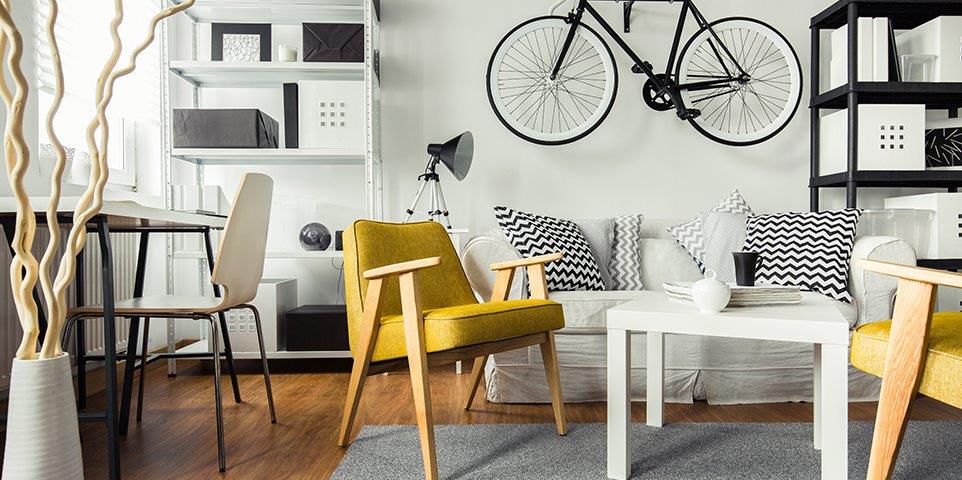Submitted by Melanie Bakala
Imagine this: you come home one night after work, and the apartment next to yours has a kitchen fire that has spread to your apartment. Your clothes, furniture, all your belongings are gone. Now think about having to make a list of everything you lost in the fire.
“Spending just 20 minutes creating a home inventory is an excellent way to help make home insurance and renters insurance coverage decisions and expedite the insurance claims process after theft, damage or loss,” said Melanie Bakala, State Farm Agent. “ This record of your insurable assets will not only help you in the settlement of a covered loss or claim, but may also help verify tax-deductible property losses and determine the right amount of insurance coverage you need.”
How to create a home inventory
The first step is to decide on what type of inventory would be easiest for you to create. A home inventory can be as simple as a list of all your possessions or a visual record for each item, but an effective home inventory should include both for added security. Today, there are even digital tools to help simplify the process of maintaining the list.
- A written inventory: A comprehensive home inventory list catalogs your belongings and should include the item description (make, model and serial number, if applicable), value and purchase date. You can create your own list using a spreadsheet or fill out a home inventory checklist that’s ready to go.
- A digital inventory: If you have an iPhone or Android phone, there are apps that can be downloaded to your phone, some of which are free. These mobile apps allow you to record a photograph of the item along with the description, value and purchase date.
- A visual record: A visual record of your possessions shows proof of ownership. This can be accomplished with a video walk-through of your home or through a series of photographs.
Once you decide on the type of home inventory you want to create, according to the Insurance Information Institute, there are some simple steps you can take to start the process. Don’t forget to include the items in your basement, attic, garage and any detached structures, such as tool sheds. Also, pay special attention to your most valuable possessions, such as antiques, art, jewelry, collectibles and electronic equipment. If you have any questions about which items are covered by your policy, contact your insurance agent.
- Record possessions as you pack to move into a new place: When moving to a new apartment or home , take a couple of extra minutes to record the belongings in each room.
- Pick one area at a time to record: You can start with a hall closet or small kitchen cabinet. Then, after capturing your belongings in that room, move on to the next.
- Record each item as you redecorate:Whether you are redecorating your apartment or a room, note each purchase you make and save the receipts. It will give you a jump start on your home inventory.
- Record recent purchases: Get into the habit of recording new purchases. Then, as necessary, go back and record your older, undocumented possessions. Along with the record, be sure to store sales receipts and appraisals (including the appraiser’s name and address) to help verify the value of each item.
- Record important information: Provide a general description, where you bought it, the make and model, and what you paid for the item. Include the serial number if the item has one.
- Record the number of each clothing type: List, for example, “five pairs of jeans, three pairs of sneakers…” Make note of items that are especially valuable.
- Include stored items as well: Things kept in your basement, attic, garage and other detached structures may not be at the top of your mind; however, you should record those items as well. If you have items in a self-storage unit, make sure to include them as they are usually covered under your home insurance policy.
- Use technology to create your digital home inventory.
- Take pictures. Capture important individual items as well as entire rooms, closets or drawers. Label your photos with what’s pictured, where you bought it, the make or model and the serial number.
- Take video. Walk through your house or apartment recording and describing the contents. For example, you might describe the contents of a kitchen cabinet: “Poppies on Blue by Lenox, service for 12 that includes a dinner plate, salad plate, bowl, cup and saucer, purchased in 2015.”
- Use an app. There are many mobile app options that can help you create and store a room-by-room record of your belongings.
How should I store my home inventory?
“Don’t let your home inventory become part of a property loss, said Melanie. Whichever inventory method you choose, it’s important to keep a copy in a fireproof safe, safety deposit box or digitally in the cloud. You can even email your inventory to your insurance agent. Sending the list has the added value of allowing your inventory to be examined by your agent to see if you need extra home or renters coverage or to add a Personal Articles Insurance policy.





















































